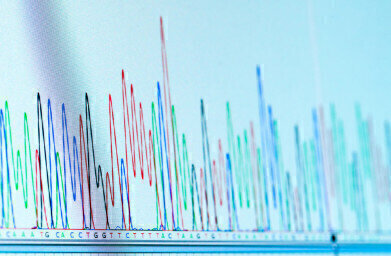HPLC, UHPLC
What is a Chromatogram?
Sep 02 2014
A chromatogram is essentially the output of a chromatography run. It is an electronic file or hardcopy containing the information generated during the chromatography run.
There are many different variations on what is shown on a chromatogram — depending on the settings used in each laboratory and any regulatory requirements. As an example, the minimum shown on a GC run of an in-process sample might be:
- Sample identification (Product, batch number, stage number)
- Sample information (weight or concentration of sample)
- Date and time the injection was made
- Analyst’s name or identification
- Instrument identification and name of analytical method used
- Filename and location of raw data generated during the run
- Chart recording showing the peaks generated and the baseline, known as a trace
- Results table (containing raw data and calculated data)
Nowadays it is very much an automated process to generate a results table, but it wasn’t always this simple...
Square Paper and Scissors
Before data analysis and digital integration become the standard — graph paper and scissors were to be found on every analyst’s shelf.
A chart recorder, linked to the detector, recorded the trace directly onto square paper or graph paper using an ink pen. From the trace, there were two methods commonly used for working out the results:
Counting squares:
The analyst used a ruler and pen to draw the best peak shape (triangle) and baseline. The number of squares in each triangle was then counted. This count was then used along with the detector’s attenuation and the sample composition was calculated.
Cutting and weighing:
A baseline was constructed for the peaks that were recorded. The peaks were then cut out and weighed. The peak area being proportional to the weight, provided the paper’s thickness and moisture content are uniform. Tricks like photocopying the trace and enlarging the trace could be used to increase precision.
As can be imaged, overlapping peaks and samples containing lots of different constituents could cause an analyst serious problems. Now, computers help reduce the errors.
Reading a chromatogram
Although modern instrumentation has removed much of the guesswork from the paper and scissors days, the ability to read and interpret a chromatogram is just as important nowadays.
The trace should always be checked, as this will be the first indication if anything has gone wrong with the chromatography. Simple checks include:
- Does the baseline look OK, flat with not too much noise?
- Are the shapes of the peaks acceptable? Not too much asymmetry, nice and sharp and on-scale
- Is there the right number of peaks? Any extra or missing peaks?
- Are the reference and internal standard peaks correctly identified, and the retention times OK?
Although the data is all recorded and calculations made for the analyst, it is the analyst’s job to make sure that no errors have been made. A discussion of data analysis in modern systems is found in this article: Automated Analysis of Open-Access HPLC Instrumentation Metrics.
Events
Mar 18 2025 Beijing, China
Mar 25 2025 Paris, France
Mar 31 2025 Beijing, China
Apr 02 2025 Saigon, Vietnam
Apr 22 2025 Kintex, South Korea















